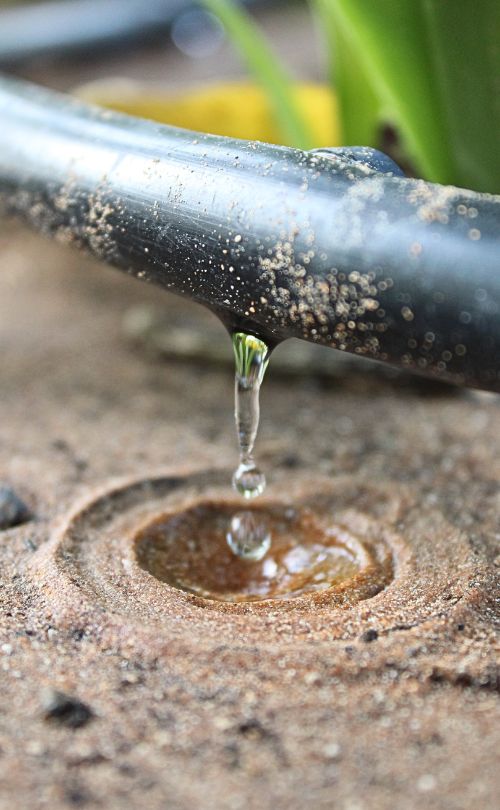What Is Hydrozoning? (And How It Helps You and Your Plants)
You may be familiar with grouping plants together based on how much sunlight they need. Sun-loving plants go in one section of your landscape. Plants that prefer shade go in different spots.
But did you know that it’s also helpful to combine plants based on how much water they need?
Hydrozoning means you group plants with similar water needs together. Plants that need minimal water get grouped in one irrigation zone. Plants that need more water get grouped in a different zone. Then—and this is the step that sometimes gets overlooked—you adjust your irrigation system to match.
This helps you irrigate your landscape more efficiently (less water waste!) and keep your plants healthy. You avoid overwatering or underwatering your landscape.
Practical things to consider when hydrozoning
Some places are natural spots for lower water plants. For example:
- Slopes can be water hogs. Slopes tend to lose water to run-off, so typically, they’re ideal places for plants that prefer less irrigation.
- Southern and western exposures tend to use a lot of water. These can be great spots for plants that are well adapted to hot, dry settings and don’t need much irrigation.
- Awkward lawn areas (like park strips between the sidewalk and street) can be ideal spots for low-water perennials and shrubs instead.
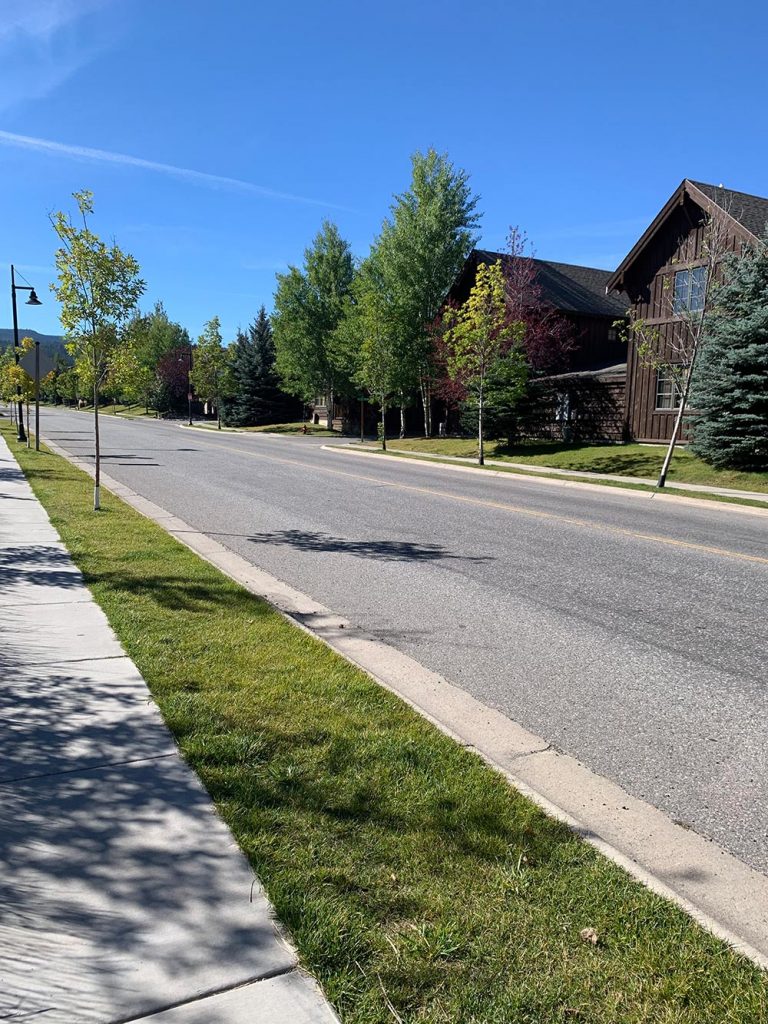
Other spots are natural places for plants that can take a little more moisture. For example:
- Plants located near downspouts, near eaves, next to sidewalks or hardscapes, and at the bottom of slopes tend to get more water run-off. Over a growing season, this can add up to many extra gallons of water. This means even if you’re planning a low water landscape, these select spots can be good places for plants that prefer a little more moisture, as well as “water opportunists” (waterwise plants that will happily take extra water).
- Northern exposures can be cooler and damper than other parts of a landscape, particularly when they’re shaded.
Many homeowners decide to place their plants that need more moisture closer to their homes (where there may be more water run-off and shade) and place their lower water plants away from their homes where it’s drier. But again, it’s important to understand what makes sense in your individual landscape.
A note about trees
Trees—particularly large, mature trees—often have their own water requirements.
So, what does this have to do with hydrozones?
If you’re hydrozoning an existing landscape with mature trees, you may want to consider putting your trees on their own irrigation zone. You can include shrubs with them.
If you want to plant new trees in a waterwise landscape, some trees tend to experience less drought stress than others. Check out these publications for helpful tree lists and tips:
- Drought tolerant trees for Colorado landscapes – PDF (Colorado State Forest Service)
- Trees and shrubs for xeriscapes – PDF (Colorado State University Extension)
- How much water do landscape trees need in Utah? (Utah State University)
Trees are an interesting and more involved topic. We’ll dig deeper into them in a future article.
A note about lawns
As a general guideline, it’s best to set up lawns on separate irrigation zones than landscape plants.
It also helps to understand how much irrigation your lawn grass actually needs. For example, traditional Kentucky bluegrass lawns may need up to 10” of water per month (2.5” per week) during the heat of the summer to stay healthy in the intermountain region. In contrast, well-adapted turf grasses, like Dog Tuff grass, may need only 1-3” of irrigation per month once established. Get to know your grass, so you know how much to water it.
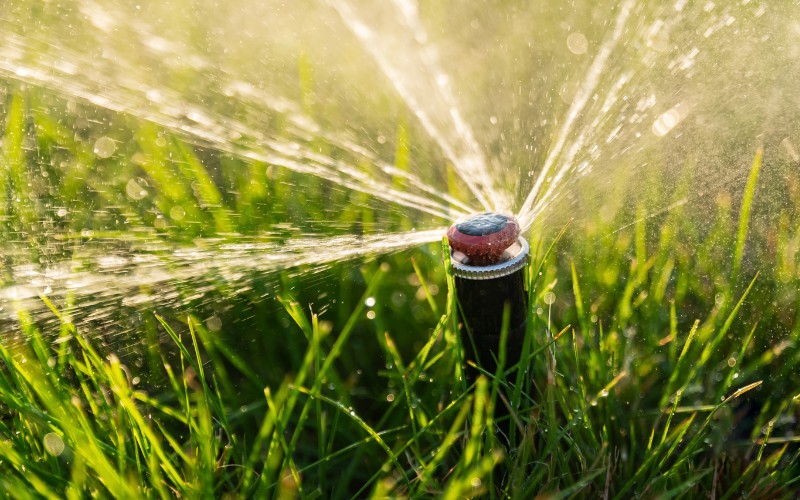
Let your landscape guide you
We suggest heading outside to take photos and make notes. Pay attention to things like:
- Where your downspouts are
- Where there’s water run-off from sidewalks, patios or other hardscaping during and after storms
- Where you have slopes
- Where you have shade
- Where snow gets piled up (some waterwise plants can handle the extra winter moisture; others prefer drier winter conditions)
- Where you have a tough time keeping lawns looking good or having plants thrive
- Where you have awkward sections of lawn (less than 8’ wide) or spots that are difficult to mow
Tip! You can take a screenshot of your home from Google Earth and make notes on it.
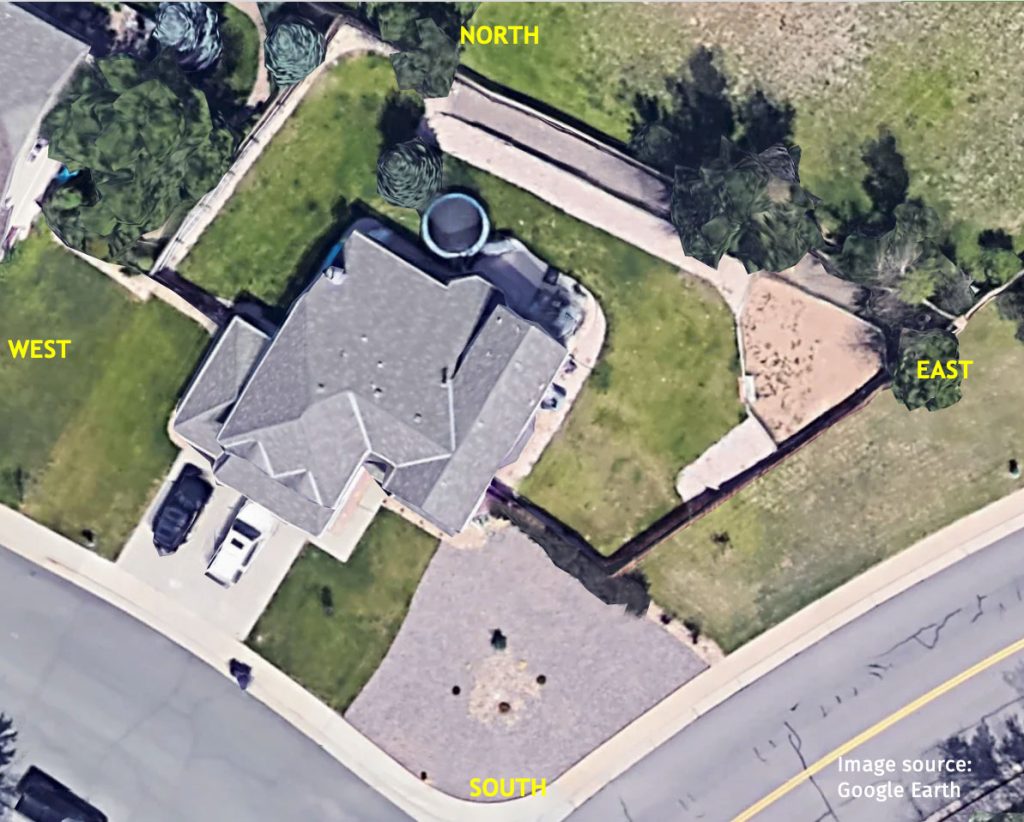
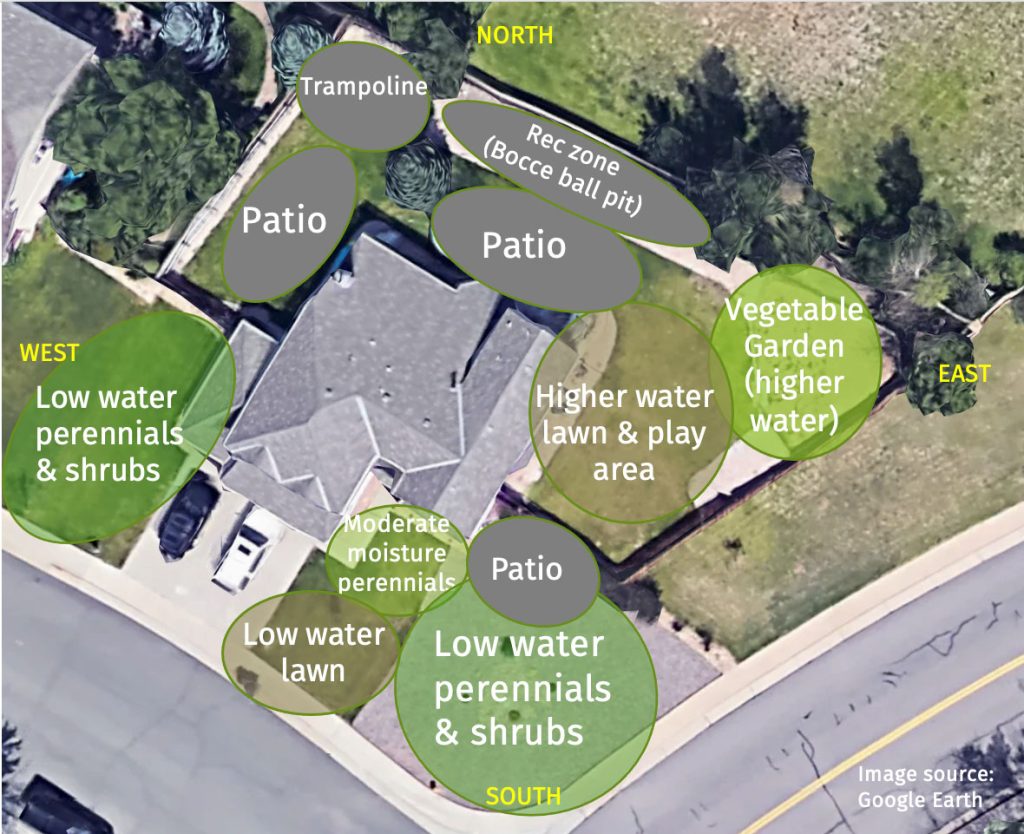
Finding plants to match your landscape
One of the keys to hydrozoning is choosing plants that have similar water requirements.
So, it’s natural to wonder, how are you supposed to know how much water each plant needs?
Unfortunately, there’s no standard language in how plant descriptions talk about water. You may see words like “xeric,” “waterwise,” “low water,” “dry” or “drought tolerant” in plant descriptions. Unfortunately, they can mean different things depending on where you live in the country, each individual plant grower and more.
Typically, states in the semi-arid West—like Colorado, Utah, Idaho, Wyoming, etc.—get half the rainfall (or even less) than occurs in other regions of the country. So, what we consider drought tolerant can be quite different than what others think of as drought tolerant!
Keeping it simple
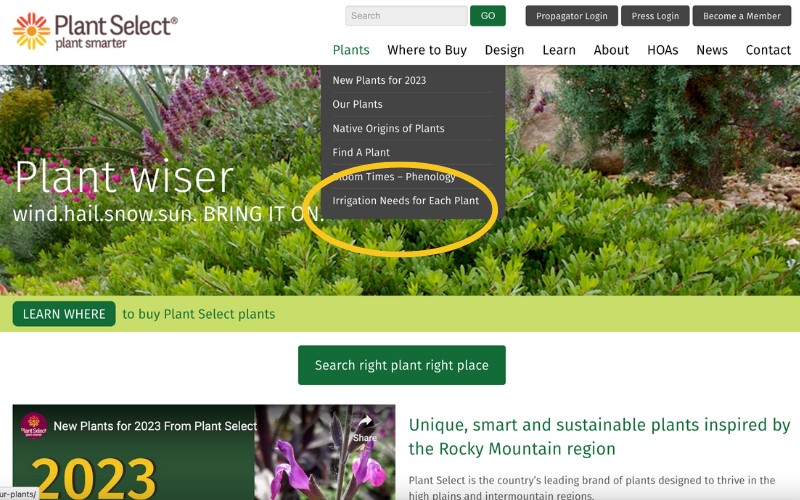
To make it easier for you to pick plants with similar water needs, you can find out how much water each Plant Select plant prefers here.
You’ll find Plant Select plants that need no supplemental irrigation.
You’ll also find plants that prefer occasional to more consistent watering.
More resources to help
- Conservation Garden Park plant database – Search for western-friendly perennials, shrubs and trees by how much water they need to thrive. Look for the search feature called “irrigation requirements.”
- How to irrigate efficiently, including trees – Utah State University

